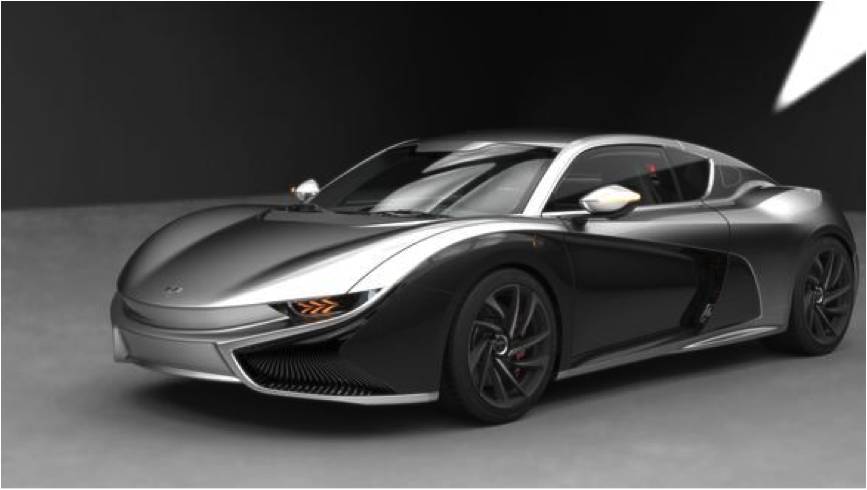On October 10th, Qiantu Motor won the third electric vehicle production qualification license issued by the Reform Commission. Prior to this, BAIC New Energy and Zhejiang Changjiang Automobile had taken the first two tickets.
As there are only ten new tickets for new energy vehicle companies, everyone is excited every time someone enters the market. The excitement is not only for celebrating the successful entrants, but also for teasing those famous and action-packed competitors outside the market, and to see who will be locked out in the end?
As a wholly-owned subsidiary of Beijing Great Wall Huaguan Automotive Technology Co., Ltd., Qiantu Motors was established in 2015 with production base in Suzhou. In February of this year, the first phase was invested with 2 billion yuan, and the annual output is expected to be 50,000 units. Qiantu Motor also has research and design centers in Beijing and Suzhou.
Great Wall Huaguan was established in 2003, and Chairman Lu Qun left Beijing Jeep after more than ten years of work to lead the team to establish Great Wall Huaguan, engaging in automotive design. With low-key and pragmatic efforts all the way, it has become a well-known design company in the industry, and has conducted R&D designs for many enterprises. In 2010, its electric vehicle division was established, taking over the R&D project of Changfeng CP2D electric vehicle. In 2012-2013, it also undertook two transformation projects of Saab 93 electric version. In 2012, the all-electric sports car “Red Scorpion” and the all-electric micro car “Tianzhi” were unveiled at the Beijing International Auto Show. In 2014, during the Beijing Auto Show, the all-electric sports car “Qiantu” concept car was exhibited.
Therefore, before its establishment in 2015, Qiantu Motors had already made full preparations in terms of R&D of electric vehicles. Since then, K50 has been exhibited at major auto shows across the country. This “technical dragonfly” quietly located in the luxury car exhibition hall always makes passers-by slow down and study it carefully. Many people were fascinated by its futuristic appearance design when they first saw K50, and were also interested in the dragonfly-shaped logo, even directly calling it the Dragonfly Car.
This time, Qiantu got the third ticket, which is a slap to some industry leaders and experts. After the first two licenses were issued, many industry media were not very optimistic about Qiantu Motors when predicting which company would receive the remaining licenses. After all, the factory in Suzhou has a production capacity of only 50,000 units, which seems to have no advantage over “second-generation” companies with a complete vehicle group background like Geely New Energy and Changan New Energy, and tycoons like LeTV and NIO with large investments.
According to an interview with Great Wall Huaguan Chairman Lu Qun, Qiantu Motors obtained the license because it fully meets the requirements of relevant regulations, with rich experience in pure electric vehicle design and development, a reliable rechargeable energy storage system (RESS), and fast approval action for the application of the license. Therefore, it entered the market early and can now show its strengths. Futian K50
Futian K50
Currently, the top three performers in the new energy vehicle industry are all traditional car manufacturers, and the contributions made by internet companies in promoting the popularity of electric cars since last year are still nowhere to be seen.
On August 12 this year, the Ministry of Industry and Information Technology (MIIT) announced the “Administrative Regulations for the Access of New Energy Vehicle Production Enterprises and Products,” which revised the admission requirements for new energy vehicle enterprises and products, proposing more specific and stringent requirements. According to the “requirements,” there are 17 specific terms for admission review, of which eight are vetoed. As long as more than two items fail to meet the standards, the enterprise will not be admitted. This regulation greatly raises the admission threshold for new energy car enterprises, and enterprises that rely solely on electric car technology for admission are likely to be disappointed. This is also the main reason why traditional car companies are the only ones holding licenses so far.
Among the emerging internet car companies, the most confusing one is the NIO due to its choice of outsourcing factory mode, which means it has basically no chance of obtaining a license. We shall wait and see how William Li solves this problem.

How to Seize the Opportunities of Automotive Revolution in the Future
Why are Internet Giants Flocking to the Automotive Industry?
This article is a translation by ChatGPT of a Chinese report from 42HOW. If you have any questions about it, please email bd@42how.com.
